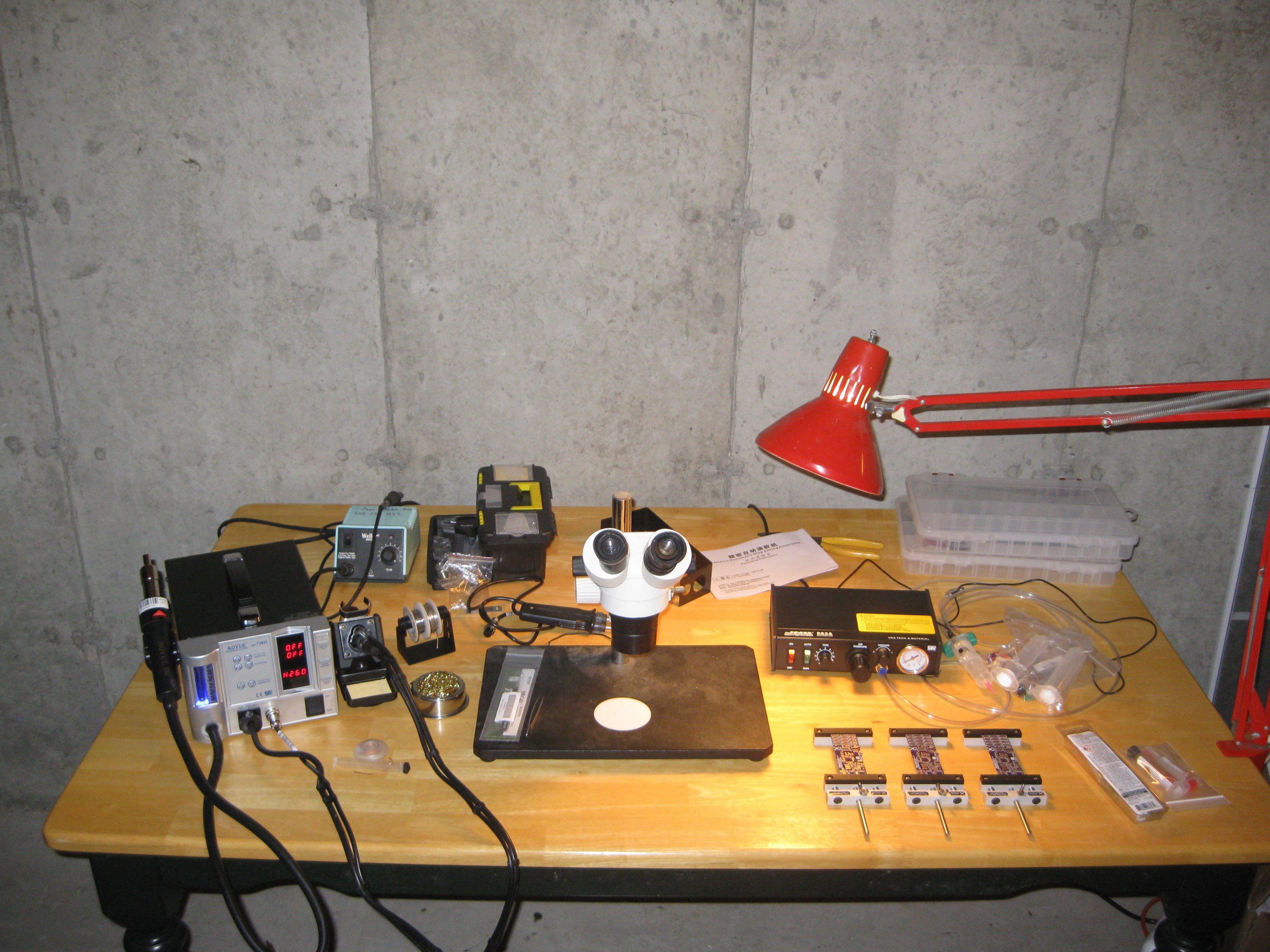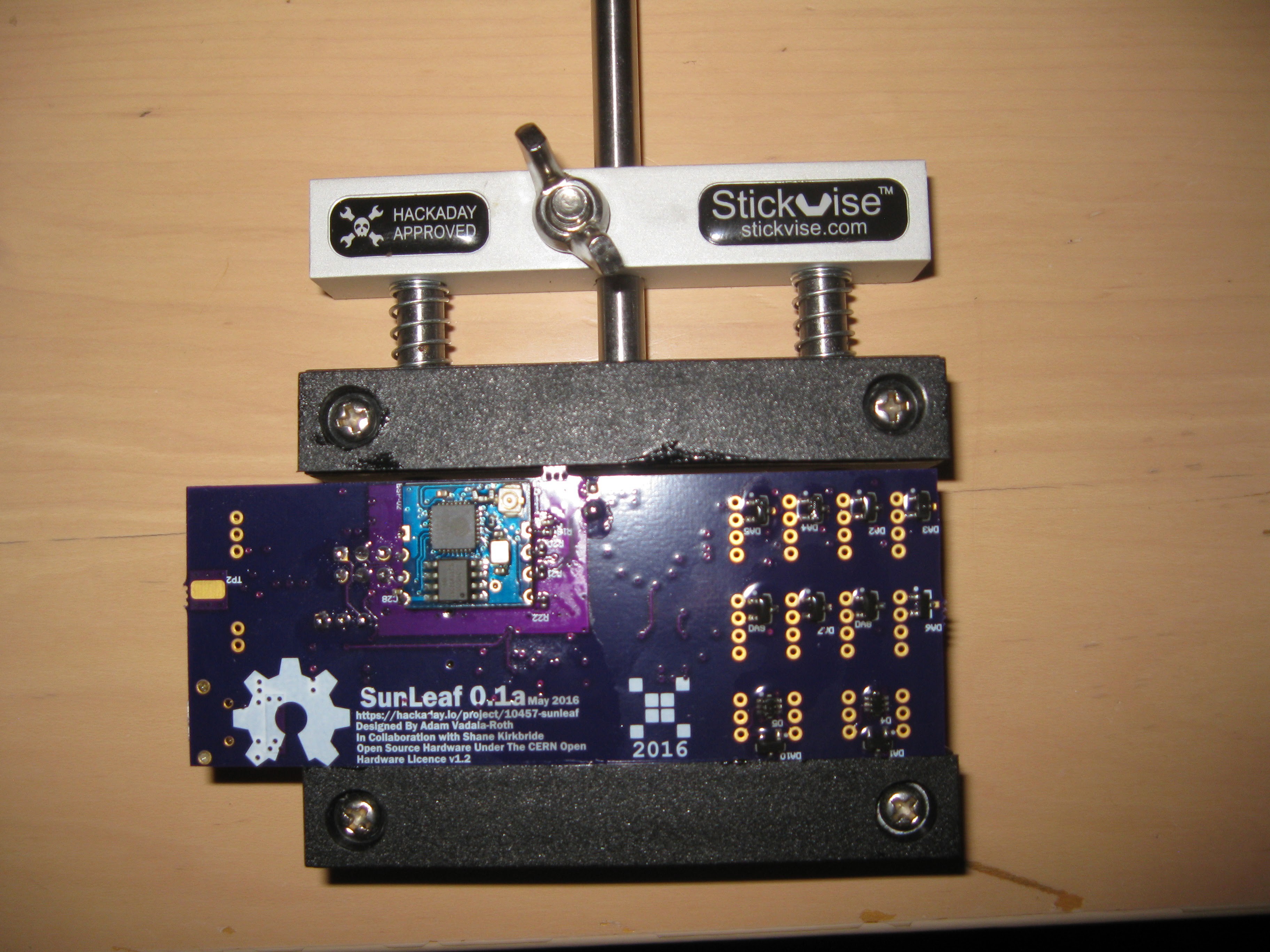So the last few updates on the SunLeaf have been about sensing and software. Last time we touched on the hardware was when the boards and components were ordered. Quite a bit had developed since then. Since then a single SunLeaf prototyep has been assembled and ready for testing, after testing the next two from the batch will be assembled/populated.
SunLeaf Prototype PCBs as they arrived in the Mail.
Some of the Components and Solder Pastes.
For the sake of cost and time of this project, the first SunLeaf was assembled by hand using a reflow hot air station and standard soldering iron. All the assembly was conducted under a stereo microscope, this was very helpful for soldering 0402s in close proximity to connectors and ICs. The scope as also essential in lining up the pins on the STM32 F4's TQFP package. Each component was placed one at a time in order as they appear in the BOM, ICs were all placed last. The prototype was soldered using lead-free low temp solder paste to parts can be easily removed, also some components like crystals can be sensitive to heat. All the paste and flux was applied to the board by hand, since I lacked an air compressor for my paste dispenser. Now the board has parts on the top and bottom, I though this was going to pose an issue but it did not, I simply populated the top side and when it was complete I did the bottom side, just flipping the board in the stick vise.
Quick look at the soldering setup/Lab

Now for the moment you've been waiting for:

Much apologies for the dirty PCB covered in flux lol. There you have it though, this is the first populated SunLeaf, now you will notice some components are missing. In my experience I like to solder throughhole components like the connectors last, if they are soldered on earlier in the process then the plastic tends to get burned by the hot air. You will also notice that the solar charging section of the PCB has been left unpopulated. There is a a flaw in the footprint of the battery charging IC, the pins were flipped, oppisite of the datasheet, its an honest mistake but it makes that section of the board non functional. In the second revisions this error will be fixed as will any others found during testing. Lucky enough the SunLeaf is setup to accept power for its onboard regulator from either the USB port or the solar panel/battery so for the sake of the project an completing all the software we are still in business. So what's next? Next I have to give the PCB a thorough cleaning to remove excess flux and solderpaste particles, this is done to prevent shorts or malfunctions in the device that could be caused by an unclean assembly. So with that said stay tuned because testing is the next step in the hardware process, hopefully we will have some functioning hardware in the days to come, stay tuned!
 AVR
AVR


Discussions
Become a Hackaday.io Member
Create an account to leave a comment. Already have an account? Log In.